Before the Irish Farmers Journal arrived, Tommy Tierney was planting wildflowers on the family farm outside Ardfinnan, Co Tipperary.
Pollinator strips have replaced the use of insecticide on the farm and come alive with pollinators and predators when in bloom.
It’s only the start of it. This is a farm with a difference and perhaps a farmer ahead of his time, ahead of policy and direct-drilling his own path into the future.
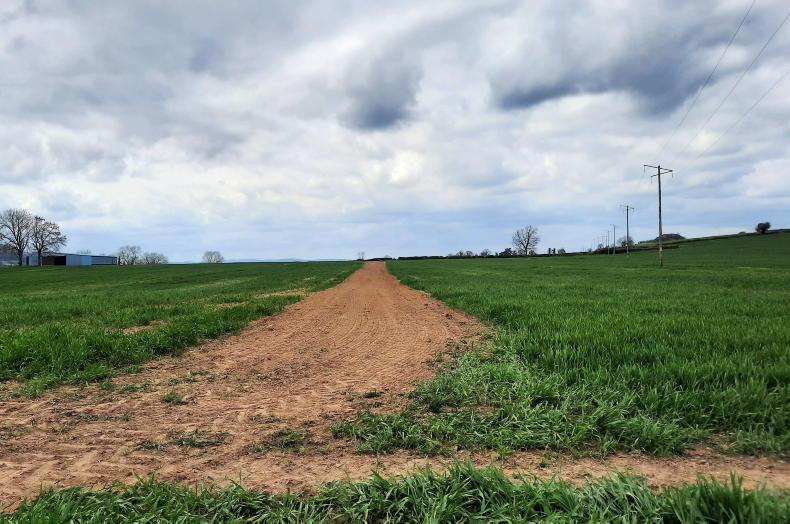
The Tierneys planted cover crops to bring to harvest for seed on the farm. This also acts as a pollinator strip.
Milk, coffee grounds, seaweed and molasses – they’re not things you would expect to hear are part of an Irish tillage farm’s pest management strategy and fertiliser use has been dramatically reduced by focusing on soil health and using liquid fertiliser.
Soil health is what everything comes back to when you talk to Tommy, who farms alongside his father Michael.
This is a new generation of farming and it starts with the soil.
From growing their own cover crop seed to producing liquid fertiliser and fermenting their own bio-stimulants, the Tierneys are busy and they are dramatically reducing chemical inputs while, most importantly, making a living from the farm.
Tommy made a key point – regenerative agriculture is not just about no-till.
All about the soil
“The ultimate goal for us is to get to a disease-suppressive soil where we can plant crops and the soil health will protect them,” Tommy said.
Crop rotation is one method used to improve soil health and structure and the Tierneys’ rotation is diverse, with winter and spring cereals, oilseed rape, beans and combi-crops which are sold as animal feed to local farmers.
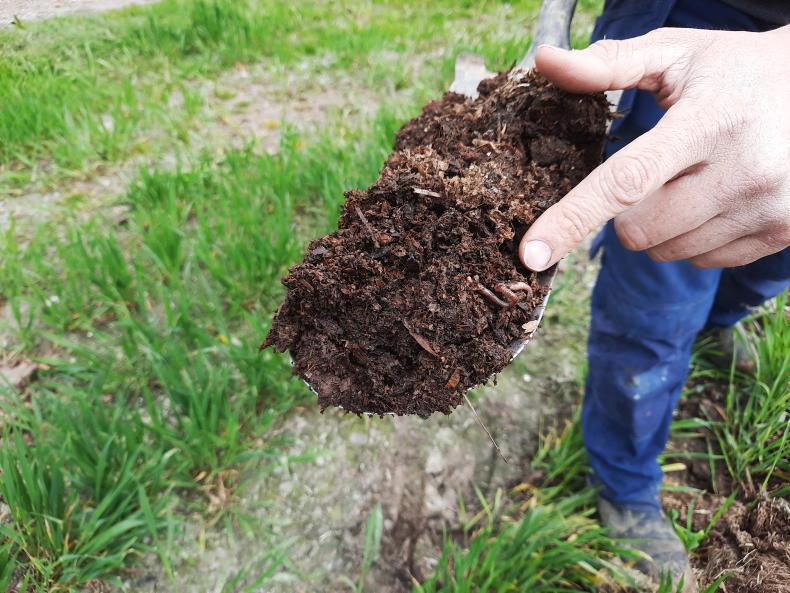
Worms helping to break down the compost.
A good rotation is essential in reduced tillage. The Tierneys started strip-tilling in 2012. The last time they ploughed was 2014 and in 2018 the move was made to direct-drill with a John Deere 750A drill.
Tommy admits that they have tried a lot of things with varying success.
The combi-crops struggled in last year’s dry summer and wet harvest and, as a result, that area has been cut back.
Liquid urea
Nitrogen use is one area where the Tierneys have managed to cut back dramatically. Tommy melts urea on the farm and applies it at a rate of 7.5 units/ac.
“We’ve reduced the nitrogen by well over one-third,” Tommy said.
“We treat those 7.5 units the same as using 15 units of granular, so that’s how we’ve reduced our nitrogen. Our winter wheat will only get 120 units, our winter barley will get 120 and the spring crops will get 80 or 90 units.”
These figures are the total units applied between both liquid urea and slurry.
He also adds fulvic and humic acid and magnesium and boron as standard to the mix as these two elements are low in the soil. He then adds other elements which have been identified as deficient through leaf analysis. Tommy hopes that by improving soil biology, some of the nutrients will become more accessible from the soil and eventually will not have to be applied.
For this reason, a carbon source is always applied with the urea like molasses.
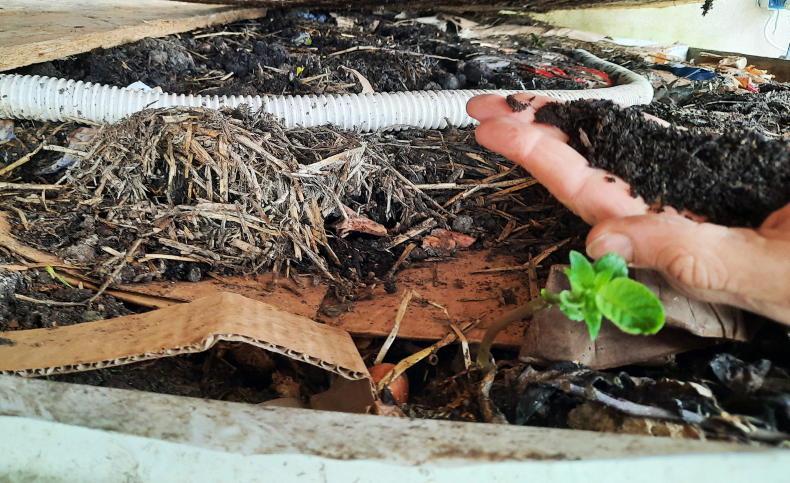
Worms feed on this compost and rainwater washes through the pipes to collect vermi juice that is applied as a seed dressing.
It is easier to cut back when soil indices are good. Phosphorus (P) and potassium (K) levels are ideal on the farm and no artificial P and K has been applied in three years. P and K is being returned in chopped straw and compost and slurry are also applied.
Compost ingredients are gathered during the year. Apple sludge from Clonmel, straw from horse yards and farmyard manure all make up the ingredients and the Tierneys adapted an old silage mower to turn the rows of compost during production.
Cutting back on pesticides
“The fact that we’re reducing the nitrogen has helped us to reduce fungicide use,” Tommy said.
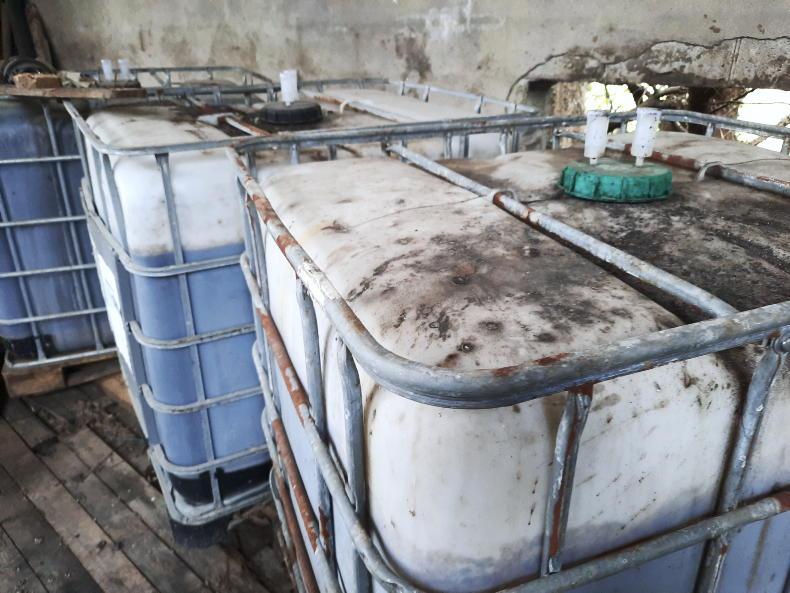
Some of the biostimulants fermenting on the farm. The mixture includes things like seaweed, milk and molasses.
“The biggest problem I see on Irish farms is the overuse of nitrogen. If we pull that back it should help the soil, disease and insect pressure.
“We’re really trying to cut back our pesticide use. We’re using half the fungicides we were using four years ago.”
Every time the sprayer goes out, it contains 3l/ha of a fermented mix containing things such as seaweed, milk, molasses, slurry, vermi juice, lactobacillus bacteria and yeast.
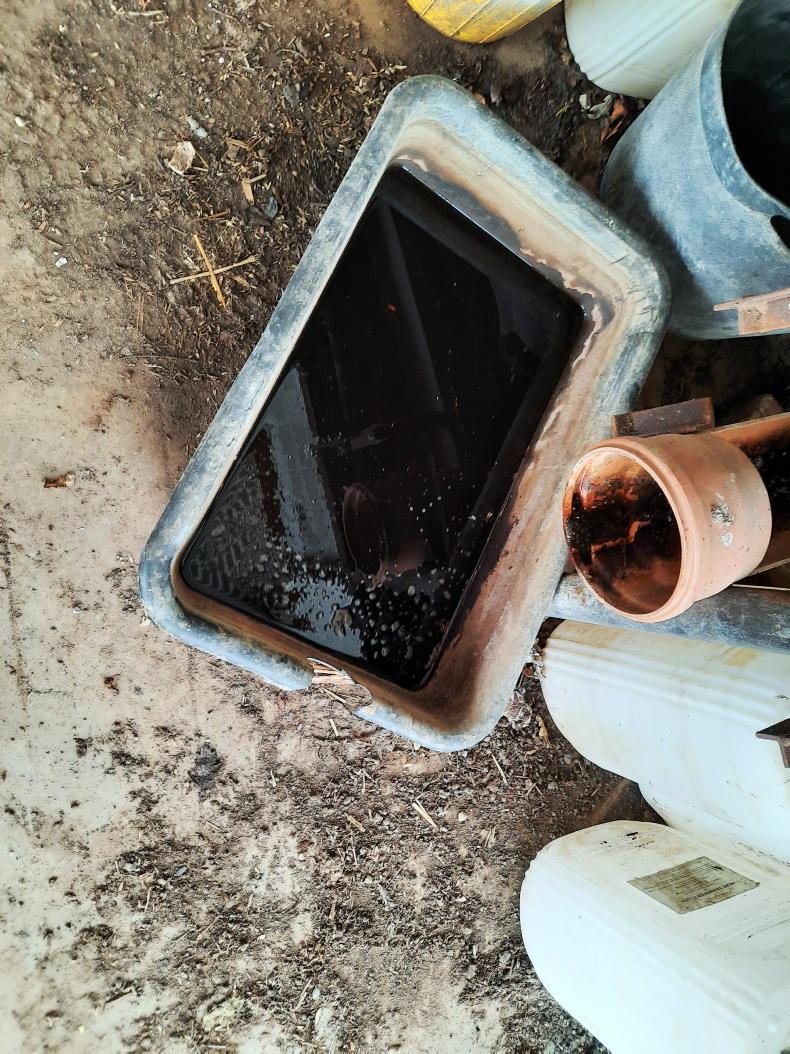
Vermi juice from the compost is used as a seed dressing.
The Tierneys make these mixtures themselves. The materials are placed in 1,000l tanks and will bubble for nearly two months as they ferment. Once the pH of the liquid drops to 3.7, it’s stable and can be applied to the crop.
Tommy is clearly a mine of knowledge on these alternative farming techniques and gathers information from farmers and books all over the world on how to improve soil health.
He’s a member of Biodiversity, Agriculture, Soil, Environment (BASE) Ireland, a group of farmers working to implement regenerative farming practices, who meet regularly to share their experiences – both good and bad.
Fungicides will be used if absolutely needed, eg the winter wheat received a fungicide for rust last year and some winter wheat received a head spray when disease pressure was high in the crop.
Herbicides are applied to growing crops when there is a cover on the soil, but not as a pre-emergence.
Cover crops for
seed production
Cover crops play an important role in the direct-drill journey and in improving soil health. Approximately 50% of the farm is covered in these crops each year ahead of the spring crops. Over the years, Tommy noticed some cover crop seeds were not establishing well. One year it was phacelia and another year vetch struggled.

The Tierneys collect material for compost and use last year's compost and microorganisms gathered from the farm to start the breakdown process. they turn the compost during the season with an old silage mower which was adapted for the job.
As a solution to the problem, Tommy has planted cover crops in one of the pollinator strips on the farm and plans to harvest the seed. Again, this comes back to acclimatising the seed to its surroundings. A seed originating from the farm it’s grown on is more likely to succeed.
Yields and the bottom line
Most readers are probably wondering at this stage how yields are affected and, of course, profits. Tommy is very honest about this.
“We’re not getting the big yields you hear about. Our yields are still on average or above the average Teagasc figures. The wheat last year did about 3.9t/ac. The spring barley did about 2.7t/ac last year.
“We started cutting spring barley at 3.3t/ac and we didn’t get back to finishing that field for 10 days with the two storms. We ended up cutting barley doing about 2.3t/ac and I do think ours suffered because a lot of it didn’t get any fungicides or growth regulators.”
Tommy also noted that when the time is counted that he spends fermenting and dressing seed, a lot of the savings he has made on pesticides are probably balanced out.
However, he is still building his soil health and as time goes on the effort is unlikely to be as much.
Tommy said there is a lot of elbow grease involved in what he’s doing, but when he looks at his accounts and can reaffirm that it’s making financial sense it makes the hard work worthwhile.
He gets great enjoyment in spraying with the window open and looking out at healthy crops and pollinator strips.
The Tierneys keep all of their own seed and have been mixing varieties on the farm for four years. Mixing varieties is a relatively simple way of suppressing disease and preventing spread from one plant to another. This year’s spring barley seed is a mixture of Errigal, Gangway and Planet, while the winter wheat contains Conros, Costello, Graham, JB Diego, Bennington and Garrus.
Tommy explained that saving seed from the farm basically helps to acclimatise the varieties to the farm’s environment and making the seed want to find nutrients helps to develop vigour for next year’s crop.
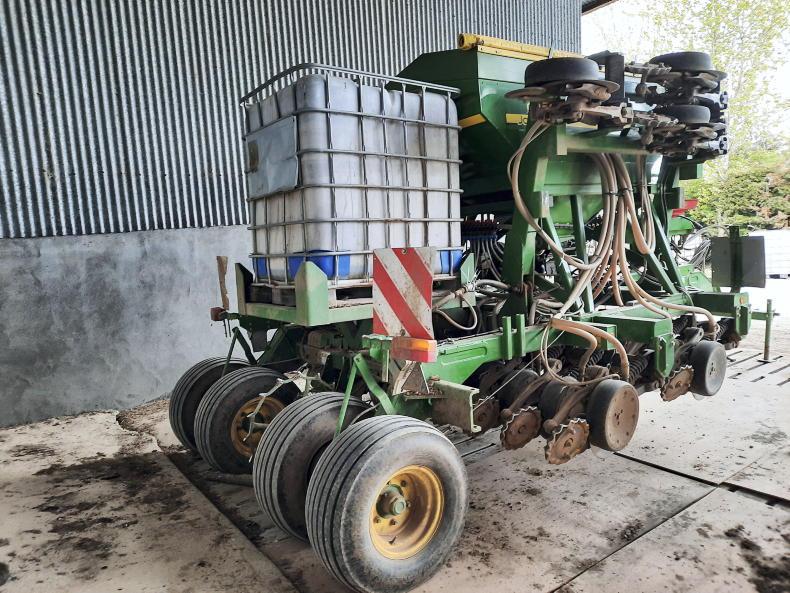
The Tierney's direct drill crops and apply biostimulants and biofertilisers with the seed.
Seed dressing is home-produced. A large compost bin is filled with food scraps, coffee grounds and cardboard. Worms break down the material and rainwater is collected and allowed to flow through the compost when seed dressing is needed.
The end product is known as vermi juice. The seed dressing is applied with a homemade dresser connected to an auger, which sends the seed straight to the drill.
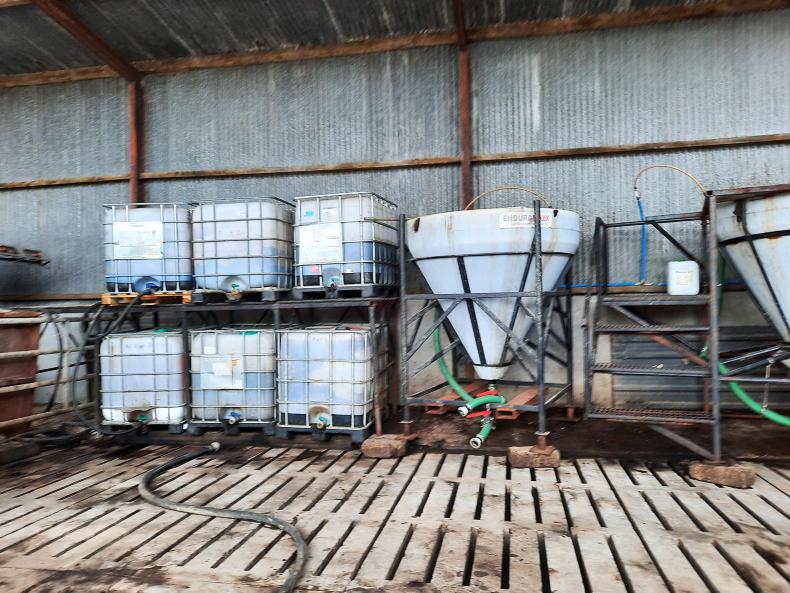
Tommy melts urea on the farm and adds biostimulants and biofertilisers to the mix.
Tommy said: “This goes straight on to the seed or as a soil drench. It’s a carbon source. The bacteria protect the seed and stimulate the biology around the seed. Everything we’re trying to do is to stimulate the soil.”
Tommy has a lot going on on the farm and there is a lot of hard graft involved. Over the years, he has adapted and introduced new techniques to the farming system. What he is doing is not for everyone, but there are some relatively simple things that could be taken and implemented on many farms.
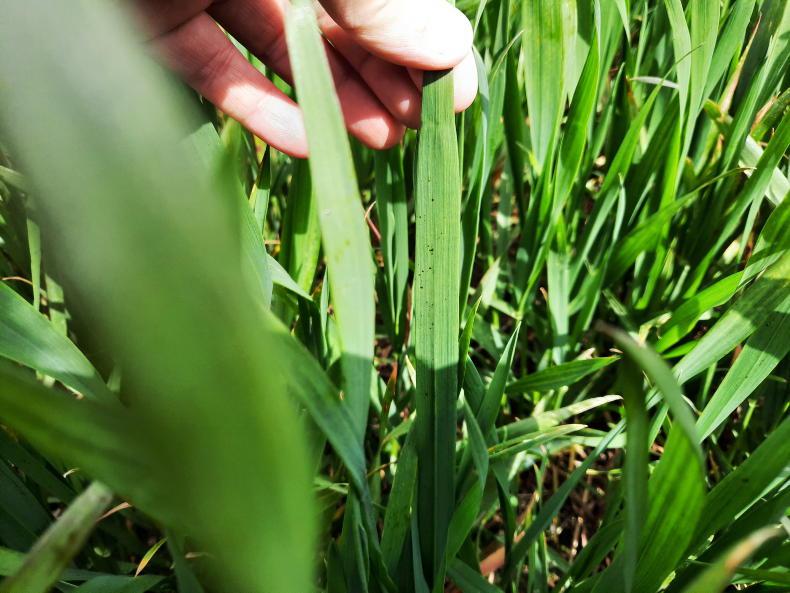
This winter wheat was sprayed with liquid urea and biostimulants. Traces of molasses can be seen on the leaf.
Many farmers have cut out insecticide, but many have not done anything to overcome the problem and a few simple strips of phacelia and vetch or wildflowers will attract more biodiversity and possibly predators of aphids such as ladybirds and hoverflies.
Mixing varieties is something that might become more accessible to farmers. Those who save their own seed can do this relatively simply and those with a chaser bin might find it an easier job to do.
The simple technique is one method that, if implemented on farm, will show visible results quickly as you can see where disease stops travelling to varieties with high resistance levels in a field.
Everyone doesn’t need to start fermenting their own bio-stimulants or bio-fertilisers straight away.
For some on smaller farms or more difficult ground the risks might be too high at the minute, but there might be some simple change you can make that could have a big impact on your farm.
The important thing is to have an open mind – maybe one field of cover crops or one pollinator strip is the start of the journey.
Before the Irish Farmers Journal arrived, Tommy Tierney was planting wildflowers on the family farm outside Ardfinnan, Co Tipperary.
Pollinator strips have replaced the use of insecticide on the farm and come alive with pollinators and predators when in bloom.
It’s only the start of it. This is a farm with a difference and perhaps a farmer ahead of his time, ahead of policy and direct-drilling his own path into the future.

The Tierneys planted cover crops to bring to harvest for seed on the farm. This also acts as a pollinator strip.
Milk, coffee grounds, seaweed and molasses – they’re not things you would expect to hear are part of an Irish tillage farm’s pest management strategy and fertiliser use has been dramatically reduced by focusing on soil health and using liquid fertiliser.
Soil health is what everything comes back to when you talk to Tommy, who farms alongside his father Michael.
This is a new generation of farming and it starts with the soil.
From growing their own cover crop seed to producing liquid fertiliser and fermenting their own bio-stimulants, the Tierneys are busy and they are dramatically reducing chemical inputs while, most importantly, making a living from the farm.
Tommy made a key point – regenerative agriculture is not just about no-till.
All about the soil
“The ultimate goal for us is to get to a disease-suppressive soil where we can plant crops and the soil health will protect them,” Tommy said.
Crop rotation is one method used to improve soil health and structure and the Tierneys’ rotation is diverse, with winter and spring cereals, oilseed rape, beans and combi-crops which are sold as animal feed to local farmers.

Worms helping to break down the compost.
A good rotation is essential in reduced tillage. The Tierneys started strip-tilling in 2012. The last time they ploughed was 2014 and in 2018 the move was made to direct-drill with a John Deere 750A drill.
Tommy admits that they have tried a lot of things with varying success.
The combi-crops struggled in last year’s dry summer and wet harvest and, as a result, that area has been cut back.
Liquid urea
Nitrogen use is one area where the Tierneys have managed to cut back dramatically. Tommy melts urea on the farm and applies it at a rate of 7.5 units/ac.
“We’ve reduced the nitrogen by well over one-third,” Tommy said.
“We treat those 7.5 units the same as using 15 units of granular, so that’s how we’ve reduced our nitrogen. Our winter wheat will only get 120 units, our winter barley will get 120 and the spring crops will get 80 or 90 units.”
These figures are the total units applied between both liquid urea and slurry.
He also adds fulvic and humic acid and magnesium and boron as standard to the mix as these two elements are low in the soil. He then adds other elements which have been identified as deficient through leaf analysis. Tommy hopes that by improving soil biology, some of the nutrients will become more accessible from the soil and eventually will not have to be applied.
For this reason, a carbon source is always applied with the urea like molasses.

Worms feed on this compost and rainwater washes through the pipes to collect vermi juice that is applied as a seed dressing.
It is easier to cut back when soil indices are good. Phosphorus (P) and potassium (K) levels are ideal on the farm and no artificial P and K has been applied in three years. P and K is being returned in chopped straw and compost and slurry are also applied.
Compost ingredients are gathered during the year. Apple sludge from Clonmel, straw from horse yards and farmyard manure all make up the ingredients and the Tierneys adapted an old silage mower to turn the rows of compost during production.
Cutting back on pesticides
“The fact that we’re reducing the nitrogen has helped us to reduce fungicide use,” Tommy said.

Some of the biostimulants fermenting on the farm. The mixture includes things like seaweed, milk and molasses.
“The biggest problem I see on Irish farms is the overuse of nitrogen. If we pull that back it should help the soil, disease and insect pressure.
“We’re really trying to cut back our pesticide use. We’re using half the fungicides we were using four years ago.”
Every time the sprayer goes out, it contains 3l/ha of a fermented mix containing things such as seaweed, milk, molasses, slurry, vermi juice, lactobacillus bacteria and yeast.

Vermi juice from the compost is used as a seed dressing.
The Tierneys make these mixtures themselves. The materials are placed in 1,000l tanks and will bubble for nearly two months as they ferment. Once the pH of the liquid drops to 3.7, it’s stable and can be applied to the crop.
Tommy is clearly a mine of knowledge on these alternative farming techniques and gathers information from farmers and books all over the world on how to improve soil health.
He’s a member of Biodiversity, Agriculture, Soil, Environment (BASE) Ireland, a group of farmers working to implement regenerative farming practices, who meet regularly to share their experiences – both good and bad.
Fungicides will be used if absolutely needed, eg the winter wheat received a fungicide for rust last year and some winter wheat received a head spray when disease pressure was high in the crop.
Herbicides are applied to growing crops when there is a cover on the soil, but not as a pre-emergence.
Cover crops for
seed production
Cover crops play an important role in the direct-drill journey and in improving soil health. Approximately 50% of the farm is covered in these crops each year ahead of the spring crops. Over the years, Tommy noticed some cover crop seeds were not establishing well. One year it was phacelia and another year vetch struggled.

The Tierneys collect material for compost and use last year's compost and microorganisms gathered from the farm to start the breakdown process. they turn the compost during the season with an old silage mower which was adapted for the job.
As a solution to the problem, Tommy has planted cover crops in one of the pollinator strips on the farm and plans to harvest the seed. Again, this comes back to acclimatising the seed to its surroundings. A seed originating from the farm it’s grown on is more likely to succeed.
Yields and the bottom line
Most readers are probably wondering at this stage how yields are affected and, of course, profits. Tommy is very honest about this.
“We’re not getting the big yields you hear about. Our yields are still on average or above the average Teagasc figures. The wheat last year did about 3.9t/ac. The spring barley did about 2.7t/ac last year.
“We started cutting spring barley at 3.3t/ac and we didn’t get back to finishing that field for 10 days with the two storms. We ended up cutting barley doing about 2.3t/ac and I do think ours suffered because a lot of it didn’t get any fungicides or growth regulators.”
Tommy also noted that when the time is counted that he spends fermenting and dressing seed, a lot of the savings he has made on pesticides are probably balanced out.
However, he is still building his soil health and as time goes on the effort is unlikely to be as much.
Tommy said there is a lot of elbow grease involved in what he’s doing, but when he looks at his accounts and can reaffirm that it’s making financial sense it makes the hard work worthwhile.
He gets great enjoyment in spraying with the window open and looking out at healthy crops and pollinator strips.
The Tierneys keep all of their own seed and have been mixing varieties on the farm for four years. Mixing varieties is a relatively simple way of suppressing disease and preventing spread from one plant to another. This year’s spring barley seed is a mixture of Errigal, Gangway and Planet, while the winter wheat contains Conros, Costello, Graham, JB Diego, Bennington and Garrus.
Tommy explained that saving seed from the farm basically helps to acclimatise the varieties to the farm’s environment and making the seed want to find nutrients helps to develop vigour for next year’s crop.

The Tierney's direct drill crops and apply biostimulants and biofertilisers with the seed.
Seed dressing is home-produced. A large compost bin is filled with food scraps, coffee grounds and cardboard. Worms break down the material and rainwater is collected and allowed to flow through the compost when seed dressing is needed.
The end product is known as vermi juice. The seed dressing is applied with a homemade dresser connected to an auger, which sends the seed straight to the drill.

Tommy melts urea on the farm and adds biostimulants and biofertilisers to the mix.
Tommy said: “This goes straight on to the seed or as a soil drench. It’s a carbon source. The bacteria protect the seed and stimulate the biology around the seed. Everything we’re trying to do is to stimulate the soil.”
Tommy has a lot going on on the farm and there is a lot of hard graft involved. Over the years, he has adapted and introduced new techniques to the farming system. What he is doing is not for everyone, but there are some relatively simple things that could be taken and implemented on many farms.

This winter wheat was sprayed with liquid urea and biostimulants. Traces of molasses can be seen on the leaf.
Many farmers have cut out insecticide, but many have not done anything to overcome the problem and a few simple strips of phacelia and vetch or wildflowers will attract more biodiversity and possibly predators of aphids such as ladybirds and hoverflies.
Mixing varieties is something that might become more accessible to farmers. Those who save their own seed can do this relatively simply and those with a chaser bin might find it an easier job to do.
The simple technique is one method that, if implemented on farm, will show visible results quickly as you can see where disease stops travelling to varieties with high resistance levels in a field.
Everyone doesn’t need to start fermenting their own bio-stimulants or bio-fertilisers straight away.
For some on smaller farms or more difficult ground the risks might be too high at the minute, but there might be some simple change you can make that could have a big impact on your farm.
The important thing is to have an open mind – maybe one field of cover crops or one pollinator strip is the start of the journey.













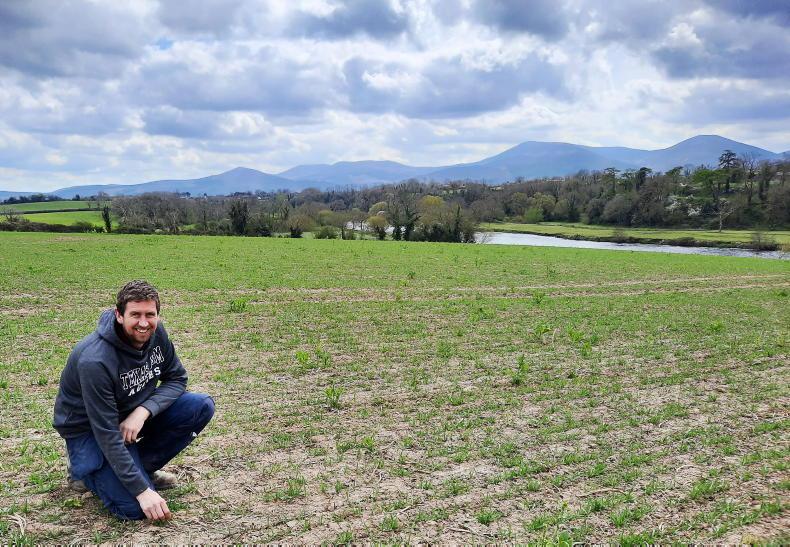


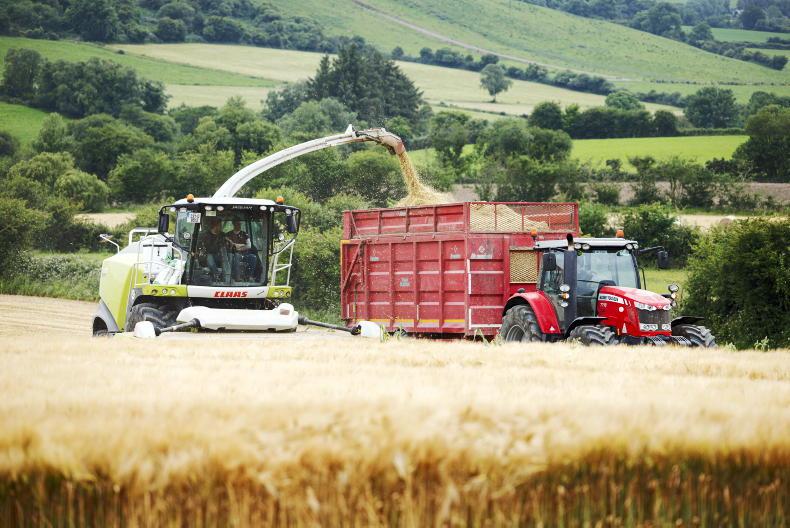
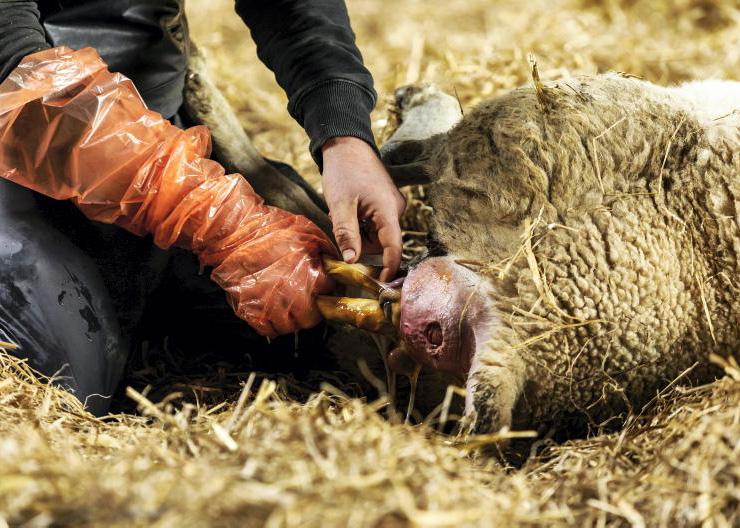
SHARING OPTIONS